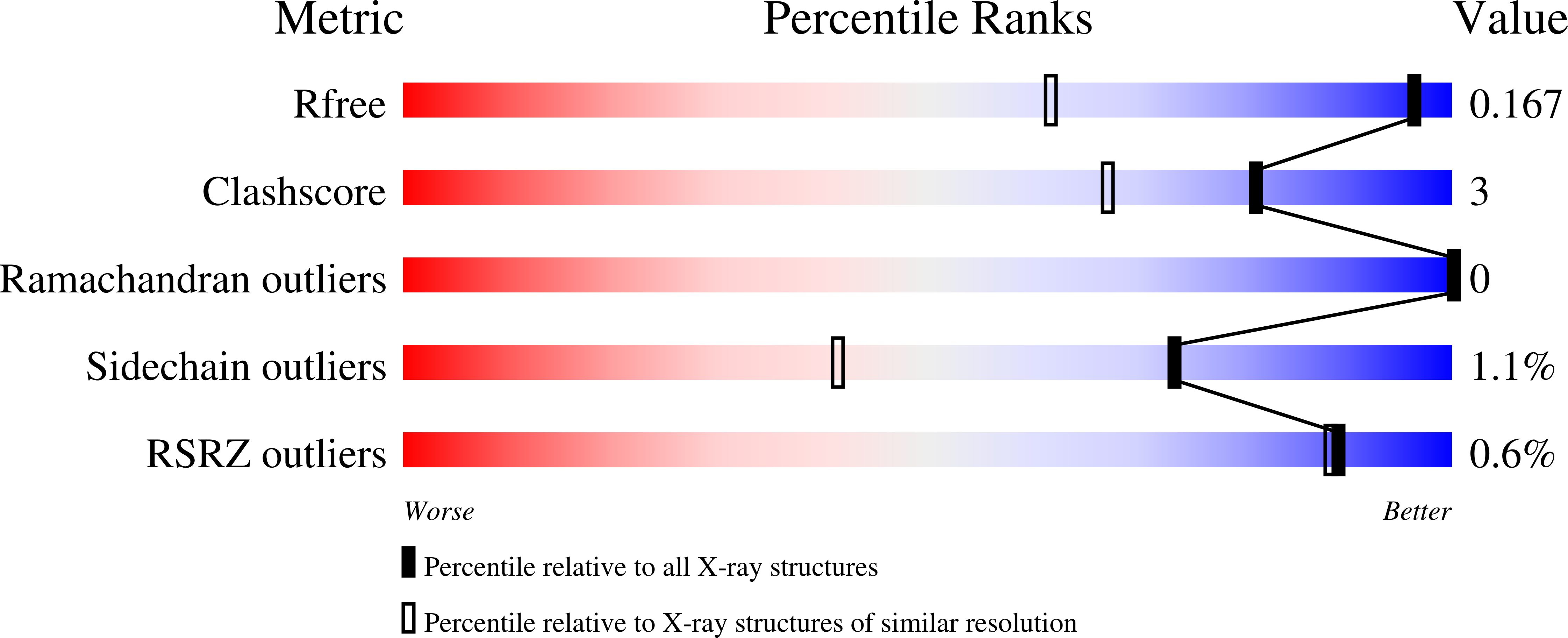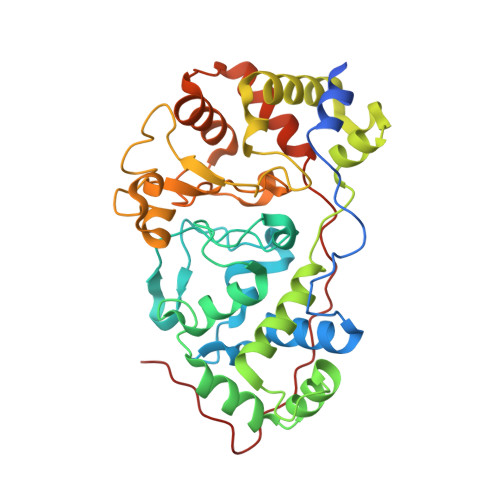Maca is a Second Cytochrome C Peroxidase of Geobacter Sulfurreducens.
Seidel, J., Hoffmann, M., Ellis, K.E., Seidel, A., Spatzal, T., Gerhardt, S., Elliott, S.J., Einsle, O.(2012) Biochemistry 51: 2747
- PubMed: 22417533
- DOI: https://doi.org/10.1021/bi300249u
- Primary Citation of Related Structures:
4AAL, 4AAM, 4AAN, 4AAO - PubMed Abstract:
The metal-reducing δ-proteobacterium Geobacter sulfurreducens produces a large number of c-type cytochromes, many of which have been implicated in the transfer of electrons to insoluble metal oxides. Among these, the dihemic MacA was assigned a central role. Here we have produced G. sulfurreducens MacA by recombinant expression in Escherichia coli and have solved its three-dimensional structure in three different oxidation states. Sequence comparisons group MacA into the family of diheme cytochrome c peroxidases, and the protein indeed showed hydrogen peroxide reductase activity with ABTS(-2) as an electron donor. The observed K(M) was 38.5 ± 3.7 μM H(2)O(2) and v(max) was 0.78 ± 0.03 μmol of H(2)O(2)·min(-1)·mg(-1), resulting in a turnover number k(cat) = 0.46 · s(-1). In contrast, no Fe(III) reductase activity was observed. MacA was found to display electrochemical properties similar to other bacterial diheme peroxidases, in addition to the ability to electrochemically mediate electron transfer to the soluble cytochrome PpcA. Differences in activity between CcpA and MacA can be rationalized with structural variations in one of the three loop regions, loop 2, that undergoes conformational changes during reductive activation of the enzyme. This loop is adjacent to the active site heme and forms an open loop structure rather than a more rigid helix as in CcpA. For the activation of the protein, the loop has to displace the distal ligand to the active site heme, H93, in loop 1. A H93G variant showed an unexpected formation of a helix in loop 2 and disorder in loop 1, while a M297H variant that altered the properties of the electron transfer heme abolished reductive activation.
Organizational Affiliation:
Lehrstuhl für Biochemie, Institut für Organische Chemie und Biochemie, Albert-Ludwigs-Universität Freiburg, Albertstraße 21, 79104 Freiburg, Germany.

















